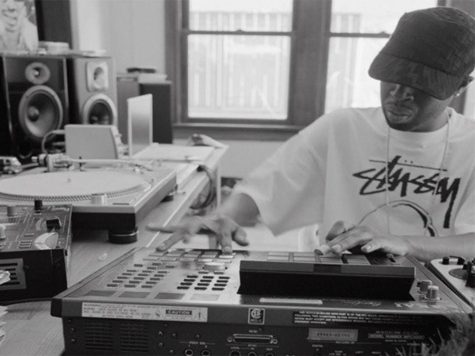From the Outside: The Shape of Jazz to Come
November 24, 2011
When Ornette Coleman’s now classic The Shape of Jazz to Come was released on May 22nd, 1959, no one was quite sure how to react. At the time, bebop was the dominant form of jazz, reaching its second wave of popularity, and Miles Davis’ Kind of Blue was to be released in a matter of months, paving the way for cool jazz. Jazz was in a very harmonic, very smooth, and very stylish place at the time. Ornette Coleman rejected the accessibility and grace of the period and instead took a route unheard of up until that point. The result was liberating, jarring, and, most importantly, immeasurably influential on the world of jazz.
Along with backing musicians Don Cherry (Cornet), Charlie Haden (Bass), and Billy Higgins (Drums), Coleman entered the studio and began recording the album with only the barest of sketches as to what the six pieces were to become by the end of the recording. This approach was not entirely uncommon in the world of jazz, and had been used by other musicians such as Miles Davis and Charlie Parker. However, whereas past musicians had laid out a chord structure and pattern for where the song was to progress, allowing room for some improvisation, Coleman did nothing of the sort. He instructed his musicians to improvise on all fronts, including with the very key that the piece was in. Blasphemy though it may have been to jazz purists of the 50’s, the resulting album is among the most compelling jazz records of the period.
Perhaps the song most representative of the style of the album is the crooning opener “Lonely Woman.” It opens in a fashion not unlike many jazz pieces, with a brief bass introduction, followed by a melodic line (if such a term can be applied here) provided by Coleman and Cherry. From there, however, it becomes clear that this is not a traditional bebop outing. Coleman’s distinctive timbre (provided by a plastic saxophone, the only kind he could afford at the time), shows itself on the upcoming solos, which use scales and keys not as rules which have to be followed, but as guidelines, to follow only when beneficial to his ends. The album then flows into the absolute tornado of a song “Eventually,” which greatly ups the tempo, as well as the improvisation. Charlie Haden’s bass provides a wildly fluctuating background for Coleman and Cherry to blaze improvisations over, while still returning to an incredibly impressive and tight melodic motif throughout. It is among the most impressive songs on the album not only for its finesse and technical muscle, but also for its ability to defy convention while still be gripping and listenable.
While dissonance and improvisation are the keys to this album, it manages to swing at certain points as well. The longest track on the album, “Peace” is a down-tempo groove of a song, almost reminiscent of the cool jazz which Miles Davis would pioneer shortly after the release of The Shape of Jazz to Come. The track is a near ten minute exploration of the synthesis between musical experimentation and easy listening, as it travels through both realms during its running time, appealing to both those who want to merely chill out while listening to jazz and those who think hard and long about the structure and meaning of what they are listening to. It is danceable, while still being dissectible.
Responses to the record varied wildly. Many accused Coleman and his defiance of tradition as purposefully doing so as to attract attention in a cheap manner. Even more disregarded his unorthodox playing as the result of a lack of technical skill. Even Miles Davis was perplexed by what he heard, describing Coleman as being “all screwed up insideÛ. These opinions, however, would give to more positive and thoughtful opinion, such as those of Virgil Thompson and Leonard Bernstein, who both praised Coleman’s work as original and genius. Miles Davis since recanted his negative opinion and admired Coleman’s efforts. The influence of the unorthodoxy of The Shape of Jazz to Come can be obviously seen on the development of the genre of free jazz, but also in many other unexpected places. Post-hardcore rockers Refused named their classic 1998 record, The Shape of Punk to Come as a tribute to Coleman. John Zorn, New York avant garde musician, has also cited the album as a major inspiration for his work. Harsh and unpleasant though it may have been at the time, The Shape of Jazz to Come has proved to be a prophetic vision of the future of the jazz music and avant-garde artistry as a whole.
















